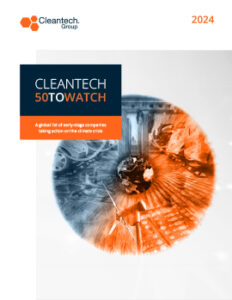Postcard Perspectives from the Asia-Pacific Region
Cleantech Group has been committed to global cleantech innovation, believing great solutions can come from anywhere and knowing that we need to achieve decarbonization and environmental protection everywhere, to successfully stave off the self-inflicted climate crisis threatening to overwhelm us, like the boiled frog.
In that spirit we will be shining more light on the region, quarter by quarter, by inviting people from around Asia-Pacific (APAC) to provide postcard-length perspectives – commenting on both the operating context/environment (as per below) and highlighting specific companies to be aware of (as per this link).
In this first quarterly round-up, we share below perspectives provided on (newish) governments post-elections, from New Zealand and India, and some reactions in southeast Asia following a recent meeting of the ASEAN countries.
Our guest contributors were reacting to the open question:
“What has happened this quarter in your country/region of most significance to cleantech innovation (e.g., a new deal, new policy, new entrant/announcement, new project)?”
“New Zealand is adjusting its approach to certain climate policies. This feels like a general trend that many countries across the globe are facing.
Changes being made by the National-led government (right leaning) include reviewing bans on oil and gas exploration and expanding mining operations to support exports.
This shift also extends to the corporate sector. Recently, in July, we have had Air New Zealand (whom many thought as a leading proponent of net-zero targets in the airline industry), modifying its 2030 science-based carbon intensity reduction target, citing challenges to the availability of new aircraft and alternative fuels, and support from governments and regulators for decarbonization.
It will be interesting to see how these policy reversals and corporate back-tracking impact innovation at the ground level. My sense as an investor is that there is general wariness, and we may see some ‘risk off’ around climate tech.”
Cleantech Group Take
This backsliding and “climate quitting” is of significant concern and is clearly visible in many countries and companies today. We hope it to be a phase we will emerge through, but it is hard to believe it will not impact the near-term investment appetite, if there is a lack of conviction of how strong the commitments are to the multi-decade transformations needed.
“With one of the hottest summers on record with temperatures soaring towards 50oC followed by a record-breaking highest number of heavy rainfall events, climate change is on the minds of everyone in India this year.
Given it was an election year, we might have to wait for the next budget for any big moves. For now, the two key directions from the government’s budget to take away were:
- A call for a ‘Climate Finance Taxonomy’ for enhancing the availability of capital for climate adaptation & mitigation; and
- The creation of an ‘Indian Carbon Market’ to move the conversation in hard-to-abate sectors from ‘energy efficiency’ to ‘emissions targets’ (in the words of the Finance Minister) to meet India’s Nationally Determined Contributions (NDC) to reduce the energy intensity of India’s GDP by 45% by 2030.”
Cleantech Group Take
India is firmly a country to pay attention to in the field of cleantech today. It will be front and center in the (adaptation) crisis, and it is a dynamic and entrepreneurial country, with a young population, with vast health and environmental challenges to respond to.
“Another move that has been made by the Indian government in the last quarter to drive advancement in climate tech, is the DGGA (Directorate General of Civil Aviation), recently releasing an advisory circular outlining the baseline airworthiness criteria for the type certification of Vertical Take-Off and Landing (VTOL)-capable aircraft.
The advisory circular, regarded as a stepping stone towards the broader implementation of advanced air mobility in India, provides comprehensive safety requirements on the design, construction, structural strength, flight performance, equipment, power plant installation, flight crew interface, and other information required for type certification of eVTOL aircraft.
This development aligns with India’s push for sustainable aviation as well as improving urban mobility, with significant implications for clean technology innovation and adoption in the region.
This also shows the government’s intent for growth in climate technologies which is driven by technological advancements, market opportunities, and a changing regulatory landscape.”
Cleantech Group Take
The future of air mobility is up for grabs. Initial moves are being made in many parts of the world, in the “vehicles” (be they electric or hybrid), business models, and in the pursuit of SAFs. Insolvencies as with Lilium in Germany will, unfortunately, happen along the way, as a new future of mobility seeks to be discovered and shaped.

Beyond common challenges, the region needs to undertake some unique initiatives to accelerate its energy transition and reach its net-zero targets. Three key initiatives are:
- Modernize Power Grid Infrastructure
Vietnam’s rapid solar expansion—from 80 MW to 18 GW in six years—has led to grid congestion and curtailment issues, highlighting the brittleness of the current infrastructure. Investing in smart grid technologies and enhancing energy storage solutions are required before a shift to renewables is possible.
Scale Up Carbon Capture, Utilization, and Storage (CCUS) for Bio-waste
Energy consumption is not the only major source of GHG emissions in Southeast Asia (SEA). In countries like Indonesia and Malaysia, large amounts of agricultural waste are often openly burned or left to decompose, releasing significant CO₂ and methane emissions. Implementing CCUS technologies that can capture these emissions, and add economic value by creating biofuels or biochar, is crucial.
Expand Electrification and Clean Cooking Access
Despite targets for 100% electrification by 2040, many rural and off-grid communities remain underserved. In Cambodia, only about 34% of the population has access to clean cooking facilities, relying heavily on traditional biomass. The Philippines faces similar challenges, with less than 50% access.
While the AEO8 outlines significant challenges, it also charts a viable path toward sustainability. By addressing these critical areas, and through collaborative efforts, ASEAN can achieve a swift and sustainable energy transition.”
“In Southeast Asia, the renewable energy landscape is a tale of ambition and challenges. The latest ASEAN Centre for Energy’s report reveals that the region is set to miss its clean power target, with renewables expected to make up only 19% of the energy mix by 2025, falling short of the ambitious 23% goal.
But here’s the twist: Southeast Asia is grappling with a critical bottleneck – insufficient storage capacity. This mismatch is creating a perfect storm of opportunity for savvy investors in the climate tech space. The region is rapidly emerging as a hotbed for climate tech innovation and investment.
Many climate-specific funds have sprouted since 2020, injecting hundreds of millions into the ecosystem. Climate tech deals have skyrocketed from 3.2% of all venture funding in 2019 to 9.5% in 2023.
This surge in climate tech is about tapping into the opportunities created by the drive towards targets (even when falling short of them). Consider the case of renewable energy:
The renewable energy sector alone is projected to unlock revenue potentials of $160B-200B by 2030.
From distributed solar and carbon markets to battery recycling and automated energy trading, the energy and power landscape is ripe for disruption. And with governments pushing for green financing and grid modernization, Southeast Asia’s energy storage and grid modernization needs represent opportunity for investors with an eye on where the future is heading.”
Cleantech Group Take
We launched Cleantech Forum Asia in southeast Asia in 2018 believing that this has the potential to become a significant cleantech ecosystem. The above perspectives seem to underline that progress, even where targets set are not being fully met.
If you are located in the Asia Pacific region and would be interested in becoming a guest contributor to a future quarterly Postcard Perspectives, please be in touch via news@cleantech.com.







